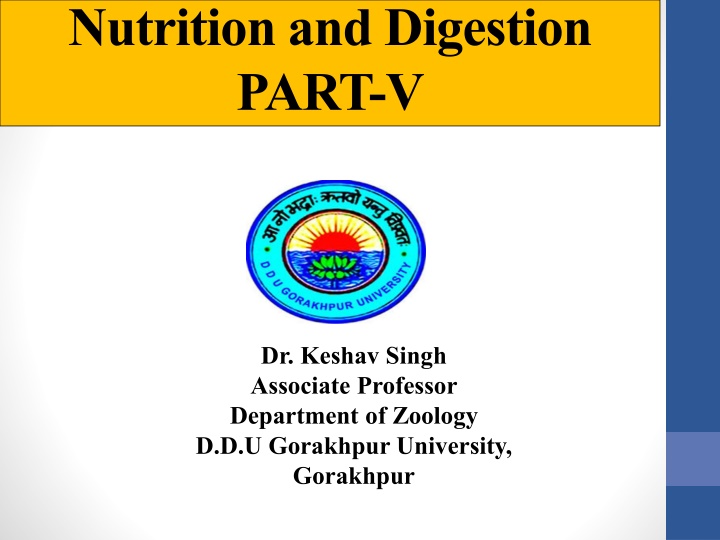
Nutrient Absorption in the Human Digestive System
Explore the process of nutrient absorption in the human digestive system, including passive diffusion, active absorption, and phagocytosis. Learn about the site of absorption and the end products of digestion in carbohydrates, proteins, and fats.
Download Presentation

Please find below an Image/Link to download the presentation.
The content on the website is provided AS IS for your information and personal use only. It may not be sold, licensed, or shared on other websites without obtaining consent from the author. If you encounter any issues during the download, it is possible that the publisher has removed the file from their server.
You are allowed to download the files provided on this website for personal or commercial use, subject to the condition that they are used lawfully. All files are the property of their respective owners.
The content on the website is provided AS IS for your information and personal use only. It may not be sold, licensed, or shared on other websites without obtaining consent from the author.
E N D
Presentation Transcript
Nutrition and Digestion PART-V Dr. Keshav Singh Associate Professor Department of Zoology D.D.U Gorakhpur University, Gorakhpur
ABSORPTION Absorption refers to the movement of nutrients, water and electrolytes from the lumenofthesmallintestineintothecell,then into the blood. In human about 8-9 liters of fluid is , thus absorbed from gastrointestinal tracteveryday.
Nutrient Absorption Passive diffusion: driven by concentration; fats, water, some minerals Active absorption: uses energy; glucose and amino acids Phagocytosis and pinocytosis: absorptive cells engulf compounds, generally larger molecules, as in immune substances in breast milk
Absorption Digestion small particles End products of digestion: Carbohydrates monosaccharides Proteins amino acids Fats glycerol, fatty acids
References https://microbenotes.com/the-human-digestive-system-organs-and-functions/ https://mymission.lamission.edu/userdata/ebnesha/docs/Chap%2017- %20The%20Digestive%20System.pdf https://en.wikipedia.org/wiki/Digestion https://www.news-medical.net/health/What-Does-the-Small-Intestine-Do.aspx https://biologydictionary.net/pharynx/ Marieb, Elaine Nicpon,Hoehn, Katja. (2012) Human anatomy & physiology /Boston : Pearson https://www.verywellhealth.com/what-are-digestive-enzymes-1945036 https://socratic.org/questions/what-are-the-layers-of-the-gastrointestinal-tract-what-are- their-functions A. K. Jain. Human Physiology book .Avichal Publishing Company,Delhi https://www.ncbi.nlm.nih.gov/books/NBK537284/ https://www.drbeen.com/blog/hormones-of-the-gastrointestinal-tract/ H.R. Singh and Neeraj Kumar.Animal Physiology and Biochemistry.Vishal publishing Co.Jalandhar Dr.V.K.Tyagi (2005)Animal Physiology and bio chemistry.Kedar nath Ram Nath ,Meerut. Toppers guarantee of Success,2019,Arihant Prakashan,,Meerut Dr. Ramesh Gupta..Modern Zoology a text book, Prakash Publication Muzaffnagar A.Guyton and J.E. Hall.(2010) Text book of Medical Physiology
